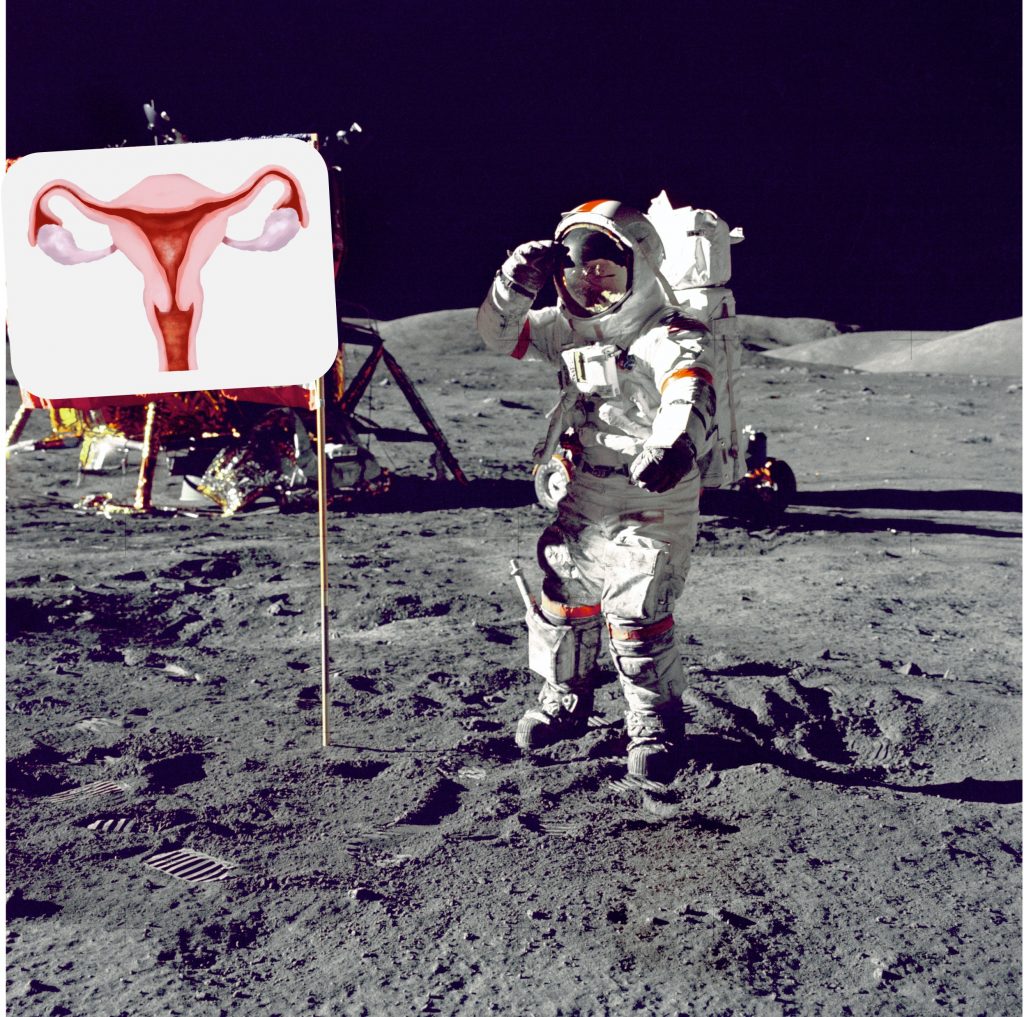This post is also available in Dutch.
Internal rhythms are governed by light sensitivity
Animal physiology follows a multiplicity of internal biological clocks influenced by cyclic environmental variations. For example, climate variations through seasonal changes are responsible for drastic behavioural adaptations such as in feeding, mating, migrating or hibernating. Even in one day, the variation of light intensity regulates our 24-hour internal clock in the brain, thereby controlling daily body functions, from sleep-wake cycles to hormonal secretion. A more controversial theme among the scientific community is the influence of moonlight – a 29.5-day cycle – on brain function and hormonal balance in women. As with the effect of day/night alternation on our daily hormonal balance, a monthly effect of moonlight is also a possibility.

Women cycles: a collaboration between brain and ovaries
Menstrual cycles are driven by a cascade of hormonal regulation between the brain and ovaries. The influence of light intensity variation on hormones first operates through the brain via neurohormones[1]. The system works as a feedback loop, meaning that the secretion of neurohormones affects ovarian hormones, and reciprocally. Interestingly, a new study published in Nature journal has just revealed that specific structures in the female brain increase or decrease in volume in response to variations of ovarian hormones.
The influence of moonlight, a myth?
In ancient times, it was believed that the moon exerted an influence on women’s fertility. Accordingly, it was proposed that most women had their menstrual cycles aligned with moon cycles, with ovulation occurring on the night of the full moon. Nonetheless, there are certain limits in the research experiments that found a correlation between moon and women’s cycles. Initially, women with irregular menstrual cycles, whether shorter or longer, were excluded from the cohort, thereby limiting the sample’s representativeness of the overall female population. Additionally, the delineation between the full-moon and new-moon phases was defined coarsely and arbitrarily.
A modern evolution of women’s cycles?
A recent large-scale study (including 1.5 million women with all sorts of cycles and not using hormonal contraception) stated that there is no correlation between women’s cycles and moonlight. Nonetheless, it is not impossible this was once true. Indeed, due to the excessive exposure to artificial light in our modern life, many of our biological rhythms are disrupted. In contrast, other animal species who live in a more preserved natural environment do express stronger sensitivity to moon cycles. In fishes, the influence of moonlight is correlated to specific variations of hormones and gene expression involved in breeding cycles. What is more, they demonstrated that excessive exposure to artificial light (such as in industrial farming) systematically leads to a disruption of this reproduction rhythm.
Research is needed
Moonlight, just as any source of natural light, can affect the reproduction of living organisms. Nevertheless, this is a long way from saying that it is affecting women’s fertility. Many variables interfering with intricate hormonal rhythms (e.g., endocrine disruptors, physical and neuropsychological stress) make it difficult to isolate the influence of moonlight. One thing is certain: more research in this area is needed.
[1] A neurohormone is a chemical messenger produced and released by neural cells into the blood.
Author: Kim Beneyton
Buddy: Viola Hollestein
Editor: Vivek Sharma
Translation: Lucas Geelen
Editor translation: Maartje Koot
Featured images from Maggie Hung and NASA with personal modifications
